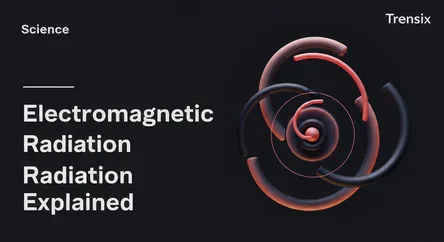Science
Electromagnetic Radiation Explained

Discover electromagnetic radiation, the energy waves that include everything from radio waves to gamma rays, and how they shape our universe and technology.
What is it?
Electromagnetic (EM) radiation is a form of energy that travels and spreads out as it goes. It consists of waves of electric and magnetic fields synchronized and propagating through space at the speed of light. This energy exists across a vast range called the electromagnetic spectrum, which includes everything from long-wavelength radio waves and microwaves to visible light, and high-energy, short-wavelength radiation like X-rays and gamma rays. All these forms are fundamentally the same phenomenon, differing only in their wavelength and frequency. We are constantly surrounded by EM radiation, from the light that allows us to see, to the radio waves that carry our favorite songs.
Why is it trending?
Interest in electromagnetic radiation is consistently high due to its central role in modern technology and scientific discovery. The rollout of 5G networks has sparked public discussion about radio wave safety and efficiency. Furthermore, advanced telescopes like the James Webb Space Telescope capture different forms of EM radiation from distant galaxies, providing breathtaking new images and insights into the origins of the universe. In medicine, innovations in imaging techniques like MRI and CT scans, which rely on different parts of the EM spectrum, continue to push the boundaries of diagnostics.
How does it affect people?
Electromagnetic radiation has a profound and multifaceted impact on daily life. Low-energy forms are indispensable; visible light is essential for vision and photosynthesis, while radio waves and microwaves power our communication systems, from Wi-Fi to GPS. Infrared radiation provides warmth. However, high-energy (ionizing) radiation, such as ultraviolet (UV) from the sun, X-rays, and gamma rays, can be harmful. Overexposure to these can damage biological tissue and DNA, increasing the risk of conditions like skin cancer. This duality makes understanding and managing our exposure to different forms of EM radiation crucial for both technological progress and public health.